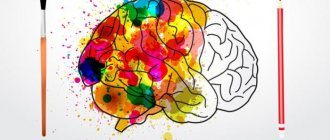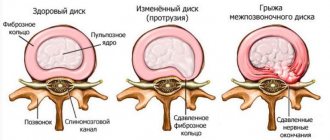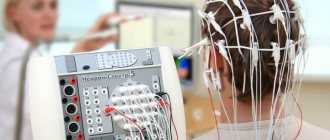Interpretation is the process of explaining, paraphrasing, interpreting the meaning of a phenomenon for a better understanding. Interpretation is a synonym for interpretation, and from this it turns out that it is a method of exegesis, the science of interpreting various life manifestations. It is also a method in the study of various sciences: mathematics, linguistics, psychology, philosophy, logic, literature.
The definition of interpretation from all sciences can be reduced to one thing - this is a technique through which hypotheses become true and endowed with meaning. Interpretation is the process of deciphering a complex system (texts, data, variables, phenomena) and drawing up a more understandable, specific and simple definition.
Interpretation is a synonym - clarification and explanation, based on this, it can be interpreted as the key to understanding certain formulas, signs that have their own meaning, but until it is interpreted, remains unknown and incomprehensible.
What are antibodies to coronavirus?
Antibodies (also known as immunoglobulins) are special proteins that are produced and/or produced by plasma cells.
What do immunoglobulins do?
Immunoglobulins are formed in response to foreign bacteria or viruses entering the body. They interact with the antigen (specific site of the pest) and neutralize it.
Thus, our immunity guards our health.
What classes of immunoglobulins are there?
There are 5 classes of immunoglobulins
, some of which contain subclasses.
- IgA - secreted on the surface of the epithelium and present in saliva, tears, and on the surface of mucous membranes.
- IgM - detected upon initial exposure to antigen.
Indicates an acute infectious process in humans. - IgG is the main class of immunoglobulins that protects against viruses, bacteria, and toxins.
- IgD is found on the surface of developing B lymphocytes. The function is not installed.
- IgE - secreted during an immediate allergic reaction.
MXLtend Library
The MLxtend library contains a number of helper functions for machine learning. For example, for StackingClassifier and VotingClassifier, model evolution, feature extraction, for development and for data visualization. Using MLxtend, we compare the boundaries of the VotingClassifier solution and the classifiers included in it:
Methods for determining antibodies to coronavirus
There are two methods for determining immunoglobulins to coronavirus in the human body - ELISA and ICA.
Immunochromatographic analysis
is a qualitative method for determining immunoglobulins of classes M and G.
A qualitative method is a method that allows only to determine the presence of antibodies in the body. In other words, to answer the question whether they exist or not.
Linked immunosorbent assay
is a quantitative method for the determination of immunoglobulins.
The quantitative method does not just indicate the presence of antibodies, but also shows their quantity per unit volume of blood.
For tests, venous blood is taken, therefore, preparation for the procedure is standard:
- Conduct the study on an empty stomach (do not eat 8 hours before the procedure).
- Refrain from drinking water an hour before blood collection.
- For smokers - do not smoke 2 hours before the procedure.
What to choose – qualitative or semi-quantitative analysis?
Why is qualitative and quantitative analysis carried out?
Qualitative analysis allows us to answer 2 questions:
- Were you sick or not?
- How long have you been sick?
A semi-quantitative test can answer these questions and also determine the amount of immunoglobulins in the body.
Why determine the amount of immunoglobulins?
Determining the amount of antibodies allows you to determine whether long-term immunity has been formed. It is what protects the body from re-infection with coronavirus.
Features of conducting practical research
Practical research is the main part of scientific work in which the author “tests in practice” the idea put forward by him, analyzes the real problem and its impact on a specific object of study, determines possible methods for solving it, taking into account the principles of efficiency and optimality.
Case study
Practical research involves conducting a specific experiment, and the participation of the author in it will be mandatory. He can observe the object from the outside or create certain conditions and “adjust” them to assess the impact of individual parameters, etc.
Each experiment is subject to detailed planning: determining the goal, objectives, object, the main factors influencing it, diagnosing the problem, taking into account the capabilities of the object when solving the problem, predicting the results, etc.
In this part of scientific work, theory and practice come into close contact, when the author is guided by existing and current rules, analyzes the situation and tries to develop an innovative way to solve it, taking into account the capabilities and prospects of the object. It is in this section that knowledge finds real application, and the author tries to creatively approach the creation of a new algorithm that can improve the activity of the phenomenon/process being studied, etc.
The practical part of the scientific work involves highlighting the following aspects:
- Brief description of the research object;
- Description of the main activities and results obtained;
- Description of testing results.
Practical research emphasizes the significance and importance of changes, options for their impact on a specific object or industry, the field of science as a whole, development prospects, etc.
Decoding the results of the test for antibodies to coronavirus
How to decipher a qualitative coronavirus antibody test
| Yes/No | Ig G (Eat) | Ig G (No) |
| Ig M (Yes) | 1 option | Option 2 |
| 5-10 weeks have passed since infection. IgM is still present in the blood, but IgG is already being formed | Acute phase of the disease. 1-3 weeks have passed since infection | |
| Ig M (No) | Option 3 | Option 4 |
| Several months have passed since the illness. You may have had the disease asymptomatically | You have not encountered any viruses or no more than 7 days have passed since infection |
Antibodies to coronavirus - table with interpretation of results
In the 2nd and 4th version
(if there are suspicious symptoms), it is recommended to take a PCR test for coronavirus to identify the pest.
The complete absence of immunoglobulins may also mean that:
- The preparation conditions were not met and the result was distorted
- The symptoms of influenza or ARVI were similar to the symptoms of coronavirus,
- The patient suffered from a mild form of the disease and did not develop antibodies.
- The patient suffered from a severe form of the disease, and the antibodies quickly disappeared.
In painting
Works of painting are always considered as a subject of interpretation
It is necessary to take into account the difference between two pictures of the world - the artist and the contemplator:
- the first draws a work based on the reality around him, his worldview and feelings;
- the second can only guess what the author wanted to say with his painting, whether his perception (what is it?) corresponds to the artist’s idea.
The works of abstract artists (W. Kandinsky, K. Malevich, P. Picasso) perhaps need this most of all.
When painting in this style, the master uses a visual language of shapes, lines, contours and colors to interpret the subject. This is very different from traditional painting styles, in which objects are interpreted closer to generally accepted ideas.
Ig G - interpretation of the test for antibodies to coronavirus
To determine class G immunoglobulins in the blood, a qualitative and quantitative method for determining antibodies is used. Below is a table with a breakdown of the enzyme immunoassay for coronavirus (igG indicator for coronavirus).
Coronavirus antibody index - transcript of captions
| Result | Index | Meaning |
| Negative | Less than 0.8 | The patient either did not encounter the disease or underwent the procedure in the acute phase. |
| Border | 0,8-1,1 | You need to do a repeat test after 14 days. Perhaps the test was done at the onset of the disease or during the recovery process. |
| Positive | More than 1.1 | This level of antibodies to coronavirus in adults is normal. The person had coronavirus infection several months ago, and humoral immunity had time to develop. |
Class G antibodies to coronavirus - interpretation of results
An antibody titer to coronavirus of 1,800 (positive result) is normal. In this case, immunoglobulins of class A and M should be absent in the blood. Their presence indicates the stage of recovery.
Permutation Importance
What features does the model consider important? Which signs have the greatest impact? This concept is called feature importance , and Permutation Importance is a method widely used to calculate feature importance. It helps us see at what point the model produces unexpected results or works correctly.
Permutation importance is different:
- It's quick to count;
- Widely applied and easy to understand;
- Used in conjunction with metrics that are commonly used.
Let's say we have a dataset. We want to predict a person's height at age 18 using data available about him or her at age 12. By randomly reordering one column, the output predictions will be less accurate because the resulting data no longer matches anything in our dataset.
Model accuracy especially suffers if
we shuffle a column that the model heavily to make predictions . In this case, shuffling the "height at 12 years" would cause unpredictable forecasts.
If we had shuffled the "sock size" instead, the predictions wouldn't have suffered as much. The process for identifying feature importance is as follows:
- We obtain a trained model on “normal” data, calculate metrics for it, including the value of the loss function.
- We rearrange the values in one column and make predictions using the resulting data set. We use these predictions and the true targets to calculate how much the loss function is worsened by the shuffling. This performance degradation measures the importance of the variable that was just shuffled.
- We return the data to the original values and repeat step 2 with the next column in the data set while the importance of each column is calculated.
for calculating permutation importance ; let's look at examples of working with them.
BAU/ml - new interpretation of the test for antibodies to coronavirus
The World Health Organization has approved a new international standard for the determination of immunoglobulins for coronavirus, with the unit of measurement BAU (translated as “binding antibody coefficient”).
Interpretation of quantitative analysis for antibodies to coronavirus
Laboratory diagnostics
the level of immunity protection against coronavirus is carried out by studying immunoglobulins to the S-protein of the virus. To facilitate the interpretation of the study results, it was proposed to use a universal measurement system.
Conversion table for antibody test results from different manufacturers in BAU/ml
| Manufacturer | Conversion factor to BAU/ml |
| Abbott ARCHITECT | 0,142 |
| Roche | 1 |
Stages of interpretation
In the interpretation of any information, as a rule, there is a certain sequence of actions:
- assumptions;
- determining the reliability of information;
- reflection and penetration into information, which often reflects the personal position of the prospector, is considered a consequence of standards, bias, etc.;
- organization of information;
- comparison with data from other sources, with other situations and conditions;
- direct multidimensional analysis;
- identifying root cause and effect;
- synthesis;
- final conclusions;
- evaluation of information to prove or refute a research hypothesis.










